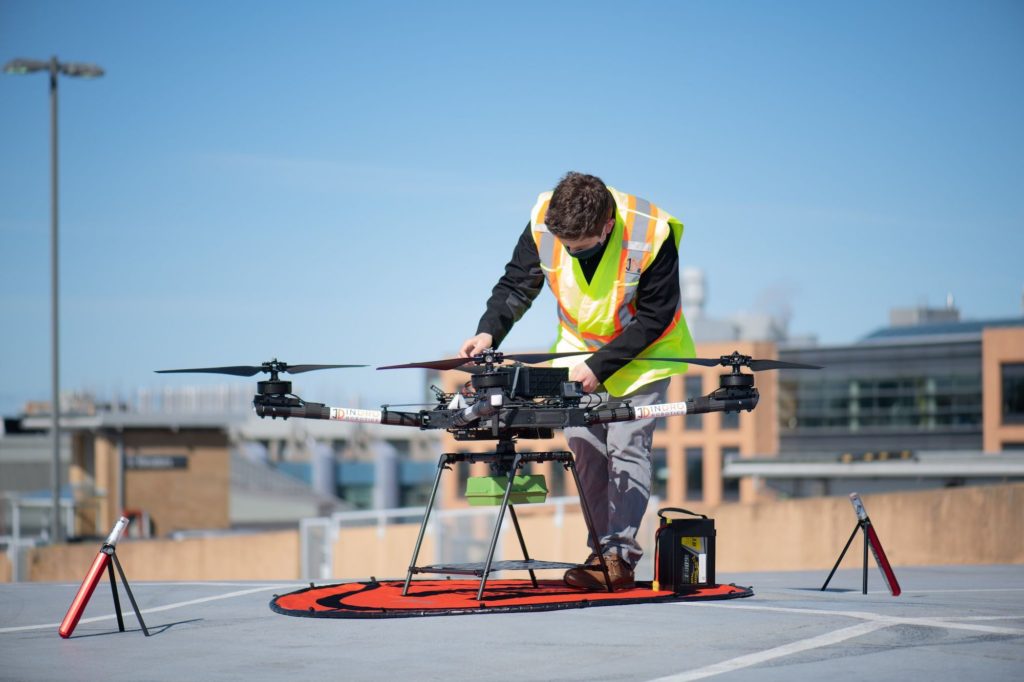Canada’s first 5G drones fly over UBC
Drone test flight shows potential of 5G networks to support essential services and accelerate innovation
Canada’s first unmanned aerial vehicle (UAV) flights over a 5G network took place at UBC last week, showcasing some of the future potential applications of 5G-enabled autonomous flight.
Two UAVs—standard quad models fitted out with a 5G signal transmitter receiver—were put through their paces by Vancouver drone R&D company InDro Robotics using UBC’s 5G network, installed by Rogers as part of a multiyear collaboration to pursue 5G research.
The drones performed precise flight manoeuvres relying on the 5G network alone, without additional navigation from ground operators, and completed tasks such as picking up and dropping off a box containing medical first-aid supplies at a designated location. Drones usually communicate using radio frequencies, with 5G significantly enhancing their capabilities.
“The drones rode the 5G network without a hitch, flying smoothly and communicating with ground operators and remote viewers with full control and near zero latency, or delay,” says Philip Reece, InDro Robotics president and chief executive officer.
The ability to have data and video shared live from the drone across 5G to multiple users in other locations opens up many new use cases, adds Reece. “Engineers in their office can inspect critical infrastructure in the field. First responders can share images and the ability to control the drone or camera from an off-site command centre. And as the next step, control of multiple drones at the same time over the 5G system will expand the use cases again.”

The UAV research is just one example of how 5G opens up new applications with significant societal benefit, says Dr. Walter Mérida, a professor in the faculty of applied science who leads MéridaLabs, the UBC research group working with Rogers and InDro Robotics on the UAV project.
“In the near future, you can imagine 5G drones being routinely used to monitor wildfires or assist in delivering medical supplies to remote locations,” says Dr. Mérida. “They can be enlisted to provide security services and deployed during times of crisis and natural disasters. 5G enables us to explore many of the challenges and opportunities that will emerge as transportation and civil infrastructures become smart and interconnected.”
In addition to the UAV project, the UBC-Rogers partnership is also advancing work on new 5G applications including autonomous vehicles and traffic monitoring. Other research interests include machine learning, artificial intelligence and other technologies that can be used in robotics, medicine, healthcare and other sectors.
“UBC’s partnership with Rogers has further developed our campus as a living lab concept, enabling our researchers and partners from the public and private sectors to explore and develop real-world 5G applications with positive social as well as potential economic impacts, while providing valuable new learning opportunities for our students,” said Dr. Gail Murphy, vice president, research and innovation at UBC.

